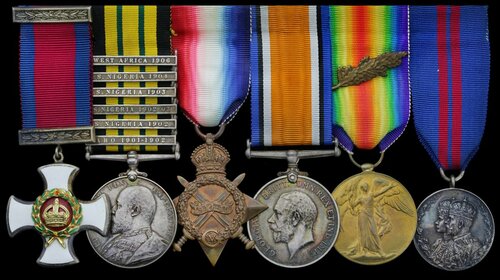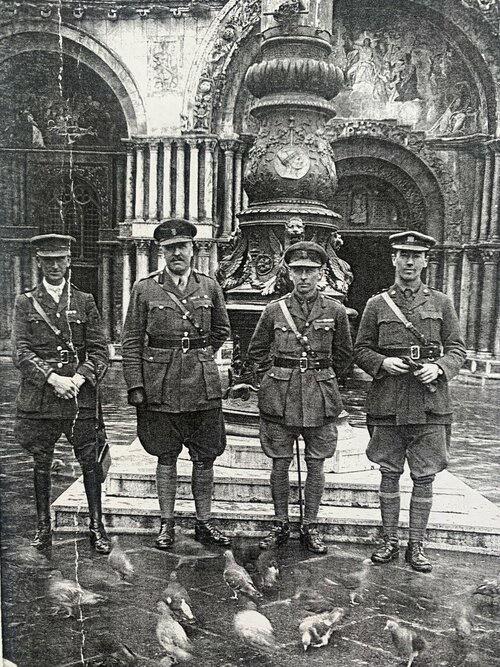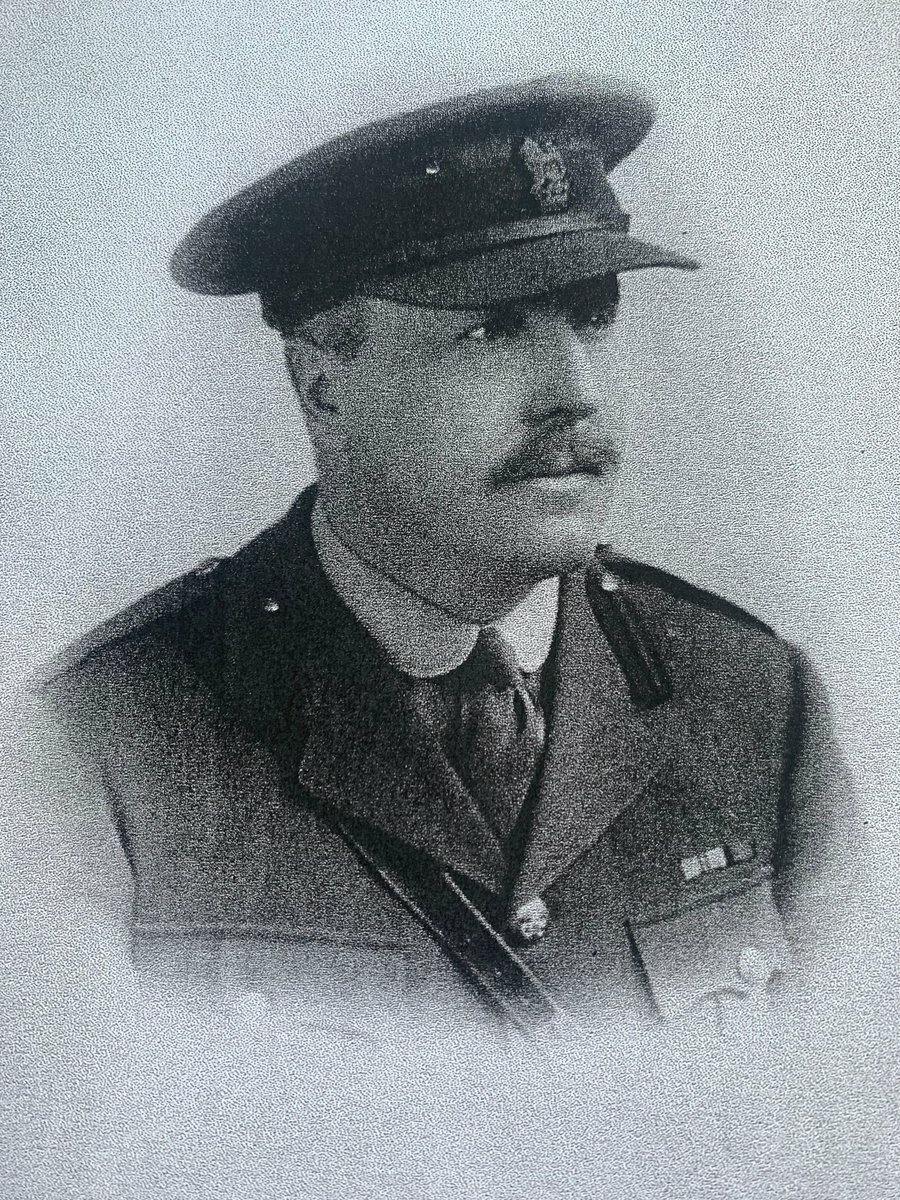Auction: 21001 - Orders, Decorations and Medals (conducted behind closed doors)
Lot: 381
A unique and outstanding West African campaign service and Great War D.S.O. group of six awarded to Major G. A. S. Williams, South Staffordshire Regiment, late Royal Fusiliers
Having gained an appointment in the South Nigeria Regiment in June 1901, he went on to participate in no less than six different campaigns in West Africa and was twice mentioned in despatches
On one occasion he was sent ahead to reconnoitre the stronghold of a rebel leader on Wilberforce Island, a mass of thick bush and swamp, surrounded by a stretch of water some 150 yards wide. The fact that neighbouring tribes supported the rebel leader made Williams' movements yet more perilous. Nonetheless, he delivered a valuable report, warning of the rising level of swamp water
On another occasion, during the South Nigeria operations of 1904, he was incensed by the discovery of the cooked and partially-eaten remains of one his missing soldiers - and instantly mounted an attack on the rebels responsible
He subsequently held temporary command of the 2nd Battalion, South Staffordshire Regiment on the Western Front and served as an Assistant Provost Marshal and, in addition to his D.S.O., was four times mentioned in despatches
Distinguished Service Order, G.V.R., silver-gilt and enamel, top riband bar adapted for mounting; Africa General Service 1902-56, 6 clasps, Aro 1901-1902, S. Nigeria 1902, S. Nigera 1902-03, S. Nigeria 1903, S. Nigeria 1904, West Africa 1906 (Lieut: G. A. S. Williams, Rl: Fus:), private rivets; 1914-15 Star (Major G. A. S. Williams. S. Staff. R.); British War and Victory Medals, with M.I.D. oak leaves (Major G. A. S. Williams. S. Staff. R.); Coronation 1911 (Capt. G. A. S. Williams, 4th South Staffordshire Regt.), contemporarily engraved naming, mounted as worn, second a little polished, otherwise good very fine (6)
D.S.O. London Gazette 1 January 1918.
George Archer Secombe Williams was born at Port Stanley in the Falkland Islands on 6 April 1874. His father, originally a solicitor from Cheltenham, had emigrated to the islands in about 1860. Young George was educated back in England, initially at Baylis House prep school at Lichfield and afterwards at Stonyhurst College.
Little else is known of his early life but he was clearly an adventurous type, trying his hand at sheep farming in Tennessee in the U.S.A., as well as a spell of prospecting in the gold fields of Western Australia. In 1900, however, he obtained a 2nd Lieutenancy in the Royal Fusiliers.
West Africa - two "Mentions" - six clasps
In June 1901, Williams was appointed a Lieutenant in the 3rd South Nigeria Regiment, in which capacity he quickly witnessed active service in the Aro Expedition of 1901-02 (Medal & clasp). The Aro Field Force was commanded by Lieutenant-Colonel A. F. Montanaro, R.A., and was mounted in response to the massacre of 400 women and children by a tribe of Aros. Several hotly contested actions ensued and 27 other ranks were killed, in addition to 13 officers and 140 other ranks wounded. Williams subsequently added two further clasps to his Africa General Service Medal for the operations in South Nigeria in 1902, operations that once again resulted in significant casualties.
In September-October 1903, with Lieutenant-Colonel A. F. Montanaro, R.A., back in command, he participated in the expedition to capture Bibi-Cala, a rebellious type who sought refuge on Wilberforce Island on the Nun River. The expedition was deemed sufficiently important to be accompanied by the acting High Commissioner, Sir Leslie Probyn, C.M.G.
Williams was sent ahead to reconnoitre the area and provide intelligence as early as July, a challenging task for Wilberforce Island was a mass of thick bush and swamp, surrounded by a stretch of water some 150 yards wide. The fact that neighbouring tribes supported Bibi-Cala made Williams' movements yet more perilous. Nonetheless, he delivered a valuable report, warning of the rising level of swamp water.
He was subsequently present at Montanaro's final attack, in which Bibi-Cala was captured and an area of some 1200 square miles brought under British rule. He was mentioned in despatches (TNA CO 520/20, refers).
In gaining the fifth clasp to his Africa General Service Medal for the South Nigeria operations of 1904, Williams once more distinguished himself. With Colonel Montanaro in overall command, the expedition was tasked with disarming rebels in the Erriam area. For his own part, Williams served in No. 1 Column under Captain H. C. MacDonald.
On 7 March 1904, MacDonald received a report that one of his missing soldiers had been killed. Williams, with 80 men, was sent to find the perpetrators. He attacked the nearby village, killing or wounding over 40 of its inhabitants. A few days later, on the 10th, he was incensed by the discovery of the cooked and partially eaten remains of another missing soldier - Private Ogunbiondo - and duly attacked the villagers responsible. The village was destroyed and, for a cost of one soldier, 74 of the rebels were killed. For his work as an aggressive patrol leader, Williams was commended by Captain MacDonald:
'He was the only officer I had with me and consequently a great deal of extra work fell to his share. This he always carried out in the most thorough and able way, never being satisfied till he had superintended the execution of any orders given. I consider it would be impossible to find an officer in the Force more suitable for a Company Commander … '
Williams was mentioned in despatches for a second time (TNA CO 520/24, refers).
Finally, in the summer of 1906, he added the sixth clasp to his Africa General Service Medal for his part in the operations hastened by the murder of District Commissioner, Mr. O. S. Crewe-Read. The opposition fought bravely and, by means of the effective deployment of their 'Dane' guns, inflicted over 200 casualties on the expedition's ranks.
Meanwhile, Williams had applied for a transfer to the Civil Police, his application being strongly endorsed by his ex-C.O., Colonel Montanaro, who stated he had the 'highest opinion of his ability, energy and zeal'. As it transpired, however, he eventually chose to return home and was appointed a Captain in the 4th Battalion, South Staffordshire Regiment.
During his voyage home, he appears to have been enlisted by the Colonial Office to keep an eye on a fellow passenger, an ex-Africa hand presumably accused of making a dubious claim for a pension on the grounds of ill-health. They need not have been concerned, Williams reporting that the subject of their interest was 'looking thin, worried and very ill'.
Back home, he was selected to command a detachment of the South Staffordshire Regiment at the Coronation in 1911, Field Marshal the Viscount Kitchener expressing his approval at 'their steadiness on parade and the excellence of their behaviour'; Williams was awarded the Medal.
The Great War
Having gone out to France in late 1915, he joined the 2nd Battalion, South Staffordshire Regiment as 2nd-in-command in January 1916. He would subsequently hold temporary command of the Battalion on two occasions on the Western Front.
Later in the year, Williams was appointed an Assistant Provost Marshal and it was in this capacity that he was awarded the D.S.O., in addition to being four times mentioned in despatches (London Gazettes15 May and 11 December 1917, 30 May 1918 and 6 January 1919, refer).
Finally demobilised in April 1921, the Major died in London February 1935, and was buried at Kensal Green; sold with two extensive files of copied research including photographs of the recipient.
For the recipient's miniatures please see Lot 792.
Subject to 20% VAT on Buyer’s Premium. For more information please view Terms and Conditions for Buyers.
Sold for
£5,800
Starting price
£5800









